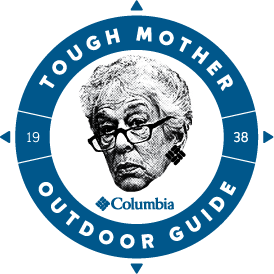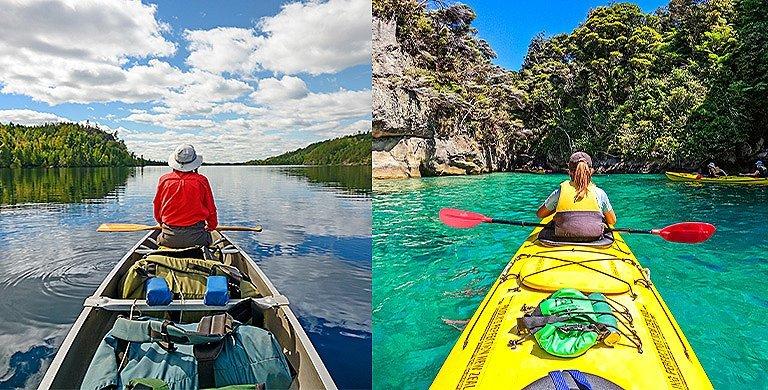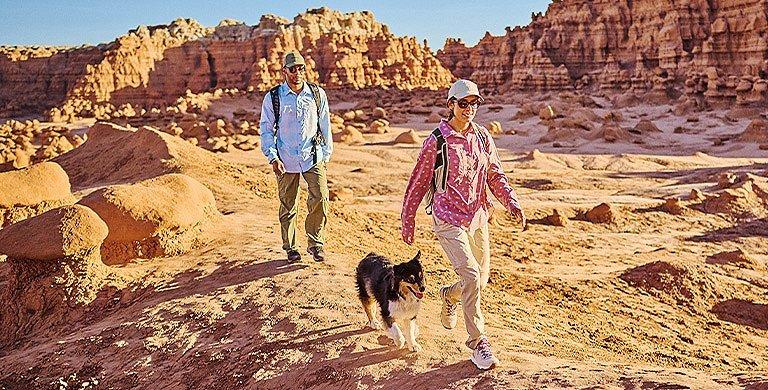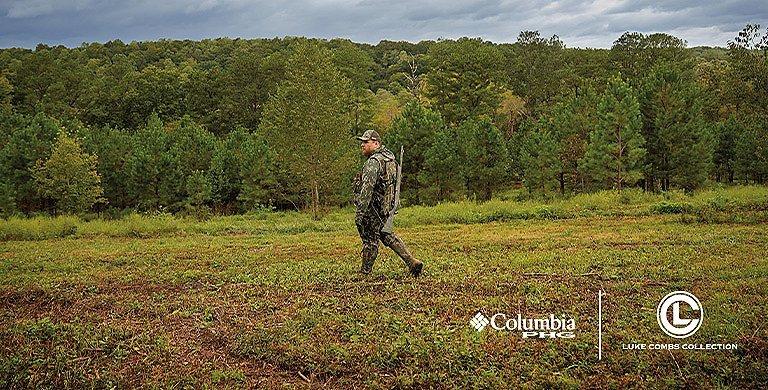OUTDOOR LIFE
Riding the Rapids: A Beginner’s Guide to Whitewater Rafting
Whitewater rafting is for anyone with a sense of adventure—and the willingness to embrace a little chaos.
BY: NANCY BOUCHARD
Whitewater rafting isn’t just for the adrenaline addicts. While some die-hard adventurers paddle solo in a canoe, kayak, or even on a paddleboard, the raft is where the party’s at—big groups, big water, and a lot of splash. These inflatable boats are designed for the wild, with multiple air chambers and high sides for safety. And the best part? If you’re not in the mood for going it alone, most iconic whitewater spots have expert guides who know every twist and turn, eddy and hole. Just don’t plan on staying dry.
Sure, channels and currents change from day to day, but you're not exactly blazing an uncharted path. Whitewater guides know the rivers like the back of their hand, meaning even beginners can take on those thrilling drops, epic scenery, and the raw power of Mother Nature. And while the adrenaline rush is real when you hear the roar of the water up ahead, rest assured, you're not going in blind.
As former whitewater guide and Higher Ground co-author Frederick Reimers reports, "There’s no better way to see the wilderness than from a raft. Whether it's a two-hour thrill ride or a multi-day journey, you get the excitement of the rapids, the banter of your guide, and the chance to camp by the river—without hauling fresh fruit or après-paddle drinks in your pack!"
Riley Gardner, instructor at World Class Academy in White Salmon, WA, says, “What makes the US stand out is the abundance of multi-day river trips. With vast wilderness areas and protected rivers, there are sections untouched for miles. The only way to explore these wild stretches is by loading up your raft with food, camping gear, and heading downriver. It’s an experience you can’t find anywhere else.”
In short, whitewater rafting is your front-row ticket to nature’s wildest waterpark. Rapids form as water crashes down steep terrain, funnels through narrow channels, slams into giant boulders, and kicks up a “wave train” of churning madness. Most trips throw in a few calm stretches between the chaos so you can catch your breath, swim, enjoy the views, and brace yourself for the next round of insanity. And if you're lucky, you'll be on a multi-day river trip, camping along the way like a true adventurer. Just remember, rivers are one-way rides. You “put in” at one spot and “take out” downstream, with your guides handling the shuttle back to your car.
Sure, channels and currents change from day to day, but you're not exactly blazing an uncharted path. Whitewater guides know the rivers like the back of their hand, meaning even beginners can take on those thrilling drops, epic scenery, and the raw power of Mother Nature. And while the adrenaline rush is real when you hear the roar of the water up ahead, rest assured, you're not going in blind.
As former whitewater guide and Higher Ground co-author Frederick Reimers reports, "There’s no better way to see the wilderness than from a raft. Whether it's a two-hour thrill ride or a multi-day journey, you get the excitement of the rapids, the banter of your guide, and the chance to camp by the river—without hauling fresh fruit or après-paddle drinks in your pack!"
Riley Gardner, instructor at World Class Academy in White Salmon, WA, says, “What makes the US stand out is the abundance of multi-day river trips. With vast wilderness areas and protected rivers, there are sections untouched for miles. The only way to explore these wild stretches is by loading up your raft with food, camping gear, and heading downriver. It’s an experience you can’t find anywhere else.”
In short, whitewater rafting is your front-row ticket to nature’s wildest waterpark. Rapids form as water crashes down steep terrain, funnels through narrow channels, slams into giant boulders, and kicks up a “wave train” of churning madness. Most trips throw in a few calm stretches between the chaos so you can catch your breath, swim, enjoy the views, and brace yourself for the next round of insanity. And if you're lucky, you'll be on a multi-day river trip, camping along the way like a true adventurer. Just remember, rivers are one-way rides. You “put in” at one spot and “take out” downstream, with your guides handling the shuttle back to your car.
Getting Started
Your best bet? Start with a class or a guided trip. Going solo might sound badass, but let’s be real—nothing beats learning from a pro. A good whitewater guide will teach you to read the river, predict its moods, and dodge rocks like it’s nothing. You’ll master the essentials, like the J-stroke, plus forward and backward strokes, and how to read the water. From there, it’s all about navigating: ferrying (crossing the river without getting sucked downstream), surfing waves, high siding to avoid a flip, portaging when needed, and, of course, scooping up anyone who unexpectedly becomes one with the river.
The Importance of a Guide
Having a guide is like having a seasoned captain at a ship’s helm during a storm—critical for staying afloat and dodging disaster. They're not just barking paddle commands—they read the river, spot hazards, and steer you safely through the chaos. As Reimers notes, “A good guide keeps you cool when the water’s raging, offering tips, steadying the raft, and cracking a joke or two when you need it the most. They’ll also tell you when it's safe to swim and what to do if you get tossed out of the boat.”
The Risk Factor
Whitewater rafting is a thrill—and it’s safe—if you know what you're getting into. The key is understanding the rapids. Class I and II are perfect for beginners—mild, fun, and low-risk. Step up to Class III and IV, and things get real with stronger currents, bigger drops, and more rocks. Class V and VI? That’s the extreme stuff—reserved for experts who know their way around serious danger. But as Gardner puts it, “Whitewater rafting is something nearly everyone can enjoy. As long as you can fit into a life jacket, get in the raft, and sit there, we can make it happen. I've taken people who are elderly, quadriplegic, and even those who've told me, ‘I don’t know how to swim.’ Luckily, life jackets don't care if you can swim—they float everyone the same. Not every river's for everyone, but at its core, whitewater's for anyone."
10 Best Whitewater Rafting Trips in the US
You’ll find whitewater rafting in nearly all 50 states. If you’re traveling, it’s a fun, budget friendly way to spice up any trip. As Gardner puts it, “Rafting takes you places few people have ever seen. A river trip can be as short as a few hours, so there’s no reason not to get started.”
- Ocoee River, Tennessee – A classic with Olympic pedigree, the Ocoee offers Class III and IV rapids, with iconic drops like "Hell’s Hole" and "The Whirlpool."
- White Salmon River, Washington – A paddler’s mecca near Hood River, this river boasts Class III-V rapids, including the B.Z. Corner to Buck Creek section through a magical “Wild and Scenic” section.
- Deschutes River, Oregon – A trip to Bend isn’t complete without a river trip through the “Big Eddy,” a Class II-III section of rapids through volcanic rock and pine forest. It takes a couple of hours, car to car, so you can hike in the morning and paddle in the afternoon.
- Middle Fork of the Salmon River, Idaho – A multi-day adventure through the Frank Church Wilderness, with Class III-V rapids and breathtaking scenery.
- Snake River, Wyoming – A family-friendly classic, the Snake has Class II-III rapids with sweeping views of the Grand Tetons and plenty of wildlife to spot.
- Gauley River, West Virginia – Known for its heart-pounding Class V rapids, like "Insane" and "Sweet’s Falls," the Gauley is a thrilling ride for experienced paddlers.
- Grand Canyon, Colorado River, Arizona – An epic bucket-list experience, featuring Class III-V rapids amidst awe-inspiring landscapes. You can opt for a short trip or go for the granddaddy of them all—a multi-week sojourn through the Canyon.
- Rogue River, Oregon – The Rogue runs through gorgeous wilderness with Class III-IV rapids, historical landmarks, and classic drops like Naked Ali, Zig Zag, and Rattle Snake. You’ll see towering trees, rugged canyons, bald eagles, and if you’re lucky, river otters.
- Arkansas River, Colorado –The Arkansas is the perfect river for every level of thrill-seeker. From mellow Class II rapids to heart-pounding Class IV adrenaline rushes, it’s a whitewater buffet. The Royal Gorge Section is no place for rookies, with 1,000-foot canyon walls towering over you and rapids like Sledgehammer and The Narrows, it’s pure adrenaline.
- American River, California – Whether you’re dipping your toes into whitewater or craving a wild ride, the American River has it all. The South Fork is perfect for beginners with its Class II-III rapids, but if you're after something with more teeth, head to the Middle Fork, where the rapids get gnarly—Class IV-V territory with drops like Devil’s Drop and Hells Half Mile that'll have you questioning your life choices in the best way possible.
Seven Top International Whitewater Rafting Destinations
- Lachine Rapids, Canada – Just outside Montreal, the Lachine Rapids on the St. Lawrence River feature huge Class III-IV rapids, offering a wild ride right by the city.
- Fraser River, B.C., Canada – With Class III-IV rapids, the Fraser Canyon provides a whitewater rush through dramatic scenery—perfect for both novices and seasoned rafters.
- Guejar River, Colombia – A jungle adventure with crystal-clear waters, hidden waterfalls, and challenging rapids running through stunning canyons.
- Tama River, Japan – A scenic blend of Class III rapids and lush mountain landscapes, with expert local guides offering insider knowledge and a touch of Japanese hospitality.
- Sesto River, Dolomites, Italy – Class III-IV rapids flowing through the jaw-dropping peaks of the Dolomites, making it a must-raft experience blending wild water with alpine beauty.
- Zambezi River – Batoka Gorge, Zambia/Zimbabwe – World-class rapids below Victoria Falls, offering big water and spiritual connection to the river. For the best thrills, go in the low-water season.
- Kaituna River, New Zealand – Home to the world’s highest commercially rafted waterfall, this river delivers big drops and adrenaline-pumping rapids through lush forests and steep cliffs.
What to Wear Whitewater Rafting
Get ready to get wet—and stay comfortable, safe, and protected with high-performance gear. Here’s what you’ll need to gear up for your next whitewater adventure.
- Helmet: A solid helmet is a must to protect your head from rocks, branches, or that inevitable “oops” moment when you’re launched from the raft (or when the person ahead of you gets a little too enthusiastic with their paddle).
- Life Jacket (PFD): A properly fitted personal flotation device is non-negotiable. It should be snug, but not restrictive, and tight enough that it won’t slide up over your head in a fast current. Dogs are frequent companions on whitewater adventures, but don’t forget a lifejacket for your furry friend.
- Quick-Dry Clothes: Forget cotton as it weighs you down when wet. Opt for quick-drying synthetic fabrics that block UVA and UVB rays. Layering is key. A hooded rash guard or moisture-wicking shirt and pants will keep you comfortable and protected from the sun. As Gardner notes, “For cooler temps, a wetsuit or drysuit (depending on conditions) will keep the chill at bay. Most whitewater rivers are cold, even in the summer.”
- Waterproof Footwear: You’ll need sturdy, water-friendly shoes that grip well—think sandals with straps or water shoes. Your feet will be in the water, possibly navigating sharp rocks, so quality footwear is essential for stability on slippery riverbanks.
- Gloves: Not a must, but definitely helpful on multi-day trips.
- Sunglasses: Seriously, grab a keeper strap. You’ll thank us when you don’t lose them to the river. Polarized lenses not only cut the glare but also help you spot underwater hazards and fish.
- Wind Jacket: It’s always a good idea to have an extra layer for extra warmth.
- Hats: Guides love booney hats with 360-degree sun protection and a keeper strap.
- Swimsuit: Most rivers have smooth sections where you can get out of the raft and float along with the current.
The next time you head out to explore a river, lake or ocean, check out Columbia’s high performance
water-friendly apparel, footwear and accessories.



